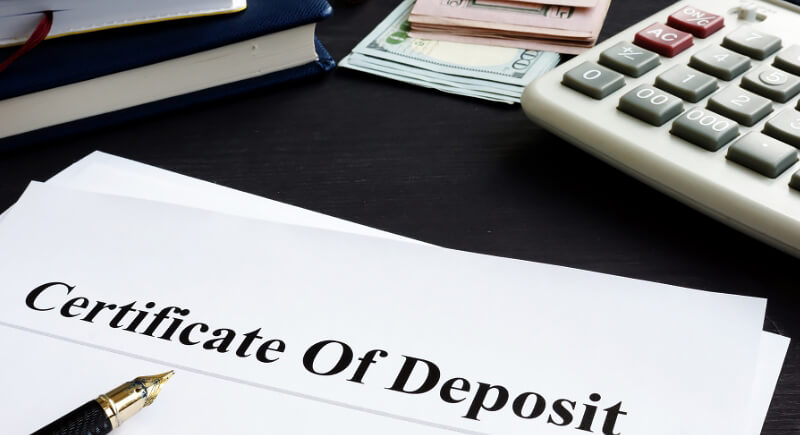The Surprising Ways Normal Americans Are Actually Building Wealth Right Now
A growing number of Americans aren’t waiting for big inheritances or viral businesses to build wealth. They’re using regular tools and making small adjustments with big impact. These adjustments include, but are not limited to, sneaky-smart savings moves and unconventional investments. Here are the surprisingly practical ways they’re doing it.
Buying Homes… Even With High Rates

Credit: Getty Images
According to a 2025 LendingTree survey, 36% say it’s their main way to build wealth. Home equity grows as mortgage payments knock down principal, turning rent money into long-term value. Even if prices drop in the short term, owning still beats paying someone else’s mortgage.
Shifting Cash Into High-Yield Savings

Credit: Getty Images
Low-yield savings accounts are losing fans. More people are moving their emergency funds to high-yield options, like online savings accounts or money market funds. A Santander survey found 69% of Americans weren’t using these better-paying accounts. That’s changing. If an account isn’t offering 4% or more right now, it’s probably underperforming.
Using Credit Cards—Strategically

Credit: pexels
Not everyone using credit cards is falling into debt. A growing number are maximizing cashback or stacking travel perks. The key is paying balances off monthly. That turns high-interest liabilities into tools. Some Americans cover everyday expenses, collect rewards, and then auto-pay through linked checking.
Maxing Employer 401(k) Matches

Credit: Getty Images
Many companies match retirement contributions, but workers have to put in their share first. Those taking full advantage of the match are effectively getting a 100% return on that portion. For 2025, employees under 50 can contribute up to $23,500.
Opening Brokerage Accounts, Not Just Retirement Funds

Credit: Canva
More Americans are investing outside their retirement accounts. Brokerage accounts are becoming a go-to place to park extra cash, especially with higher interest rates rewarding short-term options. Money market funds, index ETFs, and short-term bonds are drawing steady inflows. JPMorgan Chase reports that while checking balances have leveled off, “cash reserves” such as brokerages and CDs are rising quickly, even among households with modest incomes.
Cutting Subscriptions to Fund Investments

Credit: Getty Images
Rather than juggling six entertainment services, some Americans are canceling unused subscriptions and redirecting the savings into investing apps. Even $25 a month adds up over time. That’s $300 a year or enough to start a diversified ETF portfolio.
Taking Debt Payoff Seriously

Credit: Canva
High-interest debt is wealth repellent. Financial planners stress that paying off credit card balances offers guaranteed returns better than most investments. A 20% APR means every dollar paid down is like earning 20% risk-free. Americans are catching on.
Turning Side Gigs Into Investment Fuel

Credit: Canva
Side hustles are already paying bills and funding futures. Many workers are using gig income to open IRAs, invest in ETFs, or even dabble in fractional real estate. Whether it’s delivering groceries or freelance design work, those extra dollars often bypass spending and head straight into wealth-building.
Investing Through Apps That Simplify Everything

Credit: Youtube
Apps like Robinhood, Fidelity, and Acorns are pulling in first-time investors with easy interfaces and automatic contributions. That accessibility matters. More people now feel confident about rebalancing portfolios or buying fractional shares. When you can invest spare change in the stock market without even thinking, it adds up.
Using CDs Again—Yes, Really

Credit: Getty Images
Certificates of deposit used to feel outdated. Now, they’re back. With interest rates high, locking in a 6- to 12-month CD can offer better returns than a traditional savings account, without the stock market risk. For those saving toward a big purchase in the near future, it’s a popular move again.
Rethinking Emergency Funds

Credit: Canva
The definition of “emergency fund” has changed. Instead of parking three months of cash in a low-interest account, many are splitting their cushion. Part sits in a high-yield savings account for quick access. The rest is invested in money markets or short-term bond ETFs for a better return.
Using Target-Date Funds for Simplicity

Credit: Canva
For investors who want to set it and forget it, target-date funds remain a popular choice. These automatically adjust the mix of stocks and bonds as the investor nears retirement. Vanguard and Fidelity both report consistent growth in these accounts, especially among younger workers.
Switching Banks to Get Better Yields

Credit: Getty Images
People are moving their money to where it earns more. Online banks and credit unions are attracting new customers with higher interest rates and sign-up bonuses, while traditional banks struggle to keep up. With inflation cutting into low-yield balances, switching has become common and easier than ever. Changing banks now feels less like a hassle and more like a simple upgrade.
Investing in Broad Market Index Funds

Credit: Getty Images
Investors are leaning on broad index funds to build steady, long-term wealth. Financial experts like Robert R. Johnson often point to S&P 500 or total market index funds for their consistent historical returns and low costs. Many people are taking a disciplined approach through dollar-cost averaging, investing the same amount on a set schedule instead of trying to time the market.
Focusing On Financial Literacy First

Credit: Canva
More people are learning the basics before making big moves. Budgeting apps, online courses, podcasts, and TikTok explainers are bringing financial knowledge to the masses. More Americans are becoming money-savvy by making smarter, more confident decisions, and it’s showing up in their net worth.